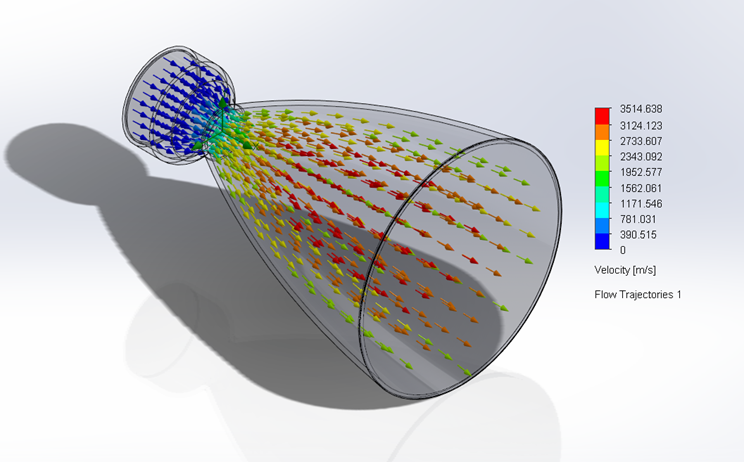projects
Rocket Engine Design
Given the requirements of a Liquid Methane-Liquid Oxygen (Methalox) rocket engine and aiming to maximize both specific impulse and burn time, I worked with a group of fellow Aerospace Engineering students to design a rocket engine capable of being used in a first-stage for low-earth orbit payload insertions.
Our design resulted in a dual-turbine, single preburner configuration, and my personal focus was on this specific preburner-turbine setup. After we used a chemical equilibrium solver to determine the near-impossibility of achieving 500 seconds of ISP at sea level and 500 seconds of burn-time — our initial challenge — we aimed to reduce the amount of moving parts by moving to a combination of a dual-turbine configuration and a single preburner. This is in contrast to leading designs in the Industry in the BE-4 from Blue Origin and the SpaceX Raptor, which use a single turbine configuration and a dual-turbine-dual-preburner configuration, respectively.
An interesting part of this project that requires much further research (and hopefully a Master’s or Doctorate degree) are the materials required to withstand the incredible heat generated from combustion of Liquid Methane and Liquid Oxygen, which are almost exclusively Ultra-High-Temperature-Ceramics (UHTCs). The fabrication of these UHTCs for use in high efficiency rocket engines is something I would like to explore in the future.
Aerodynamic Ballistic Decelerator
My senior Capstone project at Texas A&M was to develop a full simulation of the aerodynamic ballistic decelerator at Texas A&M’s Ballistic, Aero-optics, and Materials Range, an installation at the Bush Combat Development Complex. The operation of the test facility includes a twin-stage light gas gun to propel projectiles to speeds upwards of Mach 10. The projectiles would fly through a range of test chambers, where sensors can be mounted and weather effects like rain or fog can be simulated. Once exiting the testing range, the projectile traverses a vacuum chamber and then enters into the aerodynamic decelerator. The aerodynamic decelerator is intended to provide a soft-recovery method of projectiles with mission critical sensors to further develop understanding of hypersonic flight. This decelerator is comprised of two sections of gas, followed by what is effectively a gun barrel. The first section of gas, filled with helium, is much shorter than than the second section, which is filled with nitrogen. The helium section is essential to prevent the chemical dissociation of the denser nitrogen while the projectile is traveling at high hypersonic velocities.
My work focused on the chemical diffusion between the helium gas and the nitrogen gas at the partition-gate valve separating the chambers. This diffusion is highly complex and depends upon a number of factors, like the density, temperature, pressure, and pressure gradients between the chambers. As the Ballistic, Aero-optics, and Materials Range is intended to operate year-round, the temperature delta of Texan summers proved to be quite the obstacle. Using a combined diffusion approximation via fluid flows and molecular diffusion, I was able to calculate a diffusion curve over a period of time for use by the staff at the Bush Combat Development Complex.
This project was very challenging from both technical complexities and project management frustrations. Capstone projects in the Aerospace Engineering curriculum at Texas A&M are intended to be a full year of work; our main stakeholder left the university after the first semester. Because of this, the project changed from designing an alternative aeroballistic decelerator to creating a full simulation of the existing decelerator three months before the final presentation. Thankfully, my senior design team was highly organized and extremely hardworking and we had a working product by the deadline.


